Effective possibilities of a point therapy
SIssi Karz, Naturopath, Ag. Nikolaos, Greece
Dear Colleagues,
A year ago we were introduced to the new point-based adhesive applicators. Since then I have used these time and again with great
success and have achieved some spectacular results in the process.
Today I would like to introduce and warmly recommend to you the most valuable methods for making treatment of patients east er.
The first major alleviation for the therapist is brought by the
use of adhesi ve applicators for correcting the hyoid and temporomandibular joint
Whilst to date we have always worked at the input with the roller applicator with the patient standing so that the therapist does not get backache,now the same results can be achieved with adhesive applicators:
– to control obliquity of the jaw
– and at the same time also clearly remedy hip joint obliquity or at least clearly improve it
– and also remove laterality problems
The procedure could not be simpler:
In order to find out which side should be treated,prior to positioning the applicators as usual, both sides of the patient’s neck are ‘rolled’ from the front to back in the region of the sternocleidomastoideus while applying strong pressure. You treat the side which feels “jerky” i.e. the musculature is tense and blocked.
Then using your fingers you feel along the muscle to be treated in order to locate the beginning and end of the areas of tension (thickening and hardening) and in each case apply an adhesive applicator at that point.
For best results a square flexible applicator should be placed on the crown of the head as the output and as a second output the patient should also hold the magnetic depth probe on the navel. In this way the correcting oscillation is fed to the control centre in the head region as well as to the energy distribution centre in the navel-solar plexus region.
These outputs correspond to the original recommendations and are still every bit as valid today. If necessary, however, you can test out whether at the output (as specified in the manual) the large modulation mat might also prove advantageous.
The duration of program no. 530 should be tested out exactly
– by checking the surface pulse (until it has calmed down)
– kinesiologically
– or with the hand-held rod,
because the pre-programmed therapy time of 1 0 minutes is usually not quite enough.
A patient’s body needs a therapy time of between 10 to 14 minutes for this first step in correcting tension in the hyoid and temporomandibular joint [TMJ] in order to release these muscle spasms and this is why it is sometimes necessary to run the program again.
Once this first part of the treatment – the correction of tension in the neck region – has been completed satisfactorily, you can turn the program off.
You then feel the area around both TMJs with your hand to see if any muscle tension, hardening or thickening can be felt. This is usually found on the same side as the tension in the neck region. In rare cases however you will sometimes find a block in the region of the TMJ on the opposite side.
This is where you then position an additional third adhesive applicator so that during correction the ‘dissolving’ muscle spasms do not deviate downwards into the neck region and in this way ‘shifts’ can be avoided.
Unfortunately, it has not proven advantageous to work straight away with three applicators, because the patient’s musculature must first and foremost be really loose in the neck region so that thereafter the tension in the TMJ regions can be released downwards.
To avoid having to return once again to the neck- as in the original recommendation – the two adhesive applicators applied there remain connected and in place as before.
This new option of working with point adhesive applicators also permits self therapy to be carried out because they help keep the musculature of the arm relaxed and so avoid any disturbing influences on the correction process. This is a great help to therapists too.
In men with beards or heavy stubble it is often very difficult to apply an adhesive applicator to the TMJ. In such situations it is helpful having the button applicator on the tensioned area, which the patient then holds during therapy.
Program no. 530 is now started once again and left running until it is clear, by means of a time check at the pulse or using a different test procedure, that the patient’s body has everything under control.
If treatment to correct hyoid or TMJ blocks is carried out with sufficient intensity, obliquities of the jaw can normally be resolved with a single treatment. Also disturbed laterality can be compensated to a large degree. This can be checked very quickly by kinesiology using a simple test on the two halves of the brain. This means this therapy procedure is a very important factor for all people and in particular children with learning difficulties and those with age-related memory loss.
In order to permanently remedy pelvic obliquity however some other additional treatments are necessary. This stage of therapy however is based in the hyoid/TMJ region.
To supplement the settings with program no. 530 it continues to be advantageous to
set program no. 570 or in the case of the BICOM® BICOM optima® program series no. 10005 for increasing immunity, using the applicators specified in the manual.
Simplifying therapy through adhesive applicators
A second major facilitation from using adhesive applicators relates to therapy of the superordinate tissue points in the acromial shoulder joint angle.
In the case of these two very narrowly confined zones and their corresponding programs it is always a matter of tackling very precisely the distribution of nutrients in the organism so that these can gain maximum access everywhere where they are needed for healthy metabolism. In each case only one of these two points will test weakly because either there will be an acute problem in the organism or else a degenerative process underway.
In the acute case the nutrients are released too quickly in the body and cannot be absorbed at the right time by the appropriate organs. In the chronic process the nutrients ore distributed too slowly in the body with many organs being forced to turn to a similarly helpful substance in order to guarantee controlled metabolism.
Let’s recap on the optimum applicator arrangement: the output applicator on one of these points and a hand applicator on the opposite side as input.
For simplicity’s sake this was later changed to having the modulation mat at the output and the input at the zone with the weak test result.
However this does not really have the same effect as working with precision and in depth on one of these areas. Previously the button applicator with its quartz pyramid tip was used for this purpose and then later the broader goldfinger was preferred for treatment.
Previously the therapist always had to stand close to the patient in order to hold the goldfinger (or point applicator) precisely at the point to be treated. When using an adhesive applicator this is no longer necessary because now you can achieve BICOM optima®l regulation of the organism simply by applying one of these adhesive point based applicators to a precisely-determined weak nutritional distribution point on the shoulder joint, with the input applicator in the opposite hand (preferably a ball applicator).
Program no. 923 is used in therapy for a chronic-degenerative tissue process on the left shoulder joint (see photo), while for the treatment of an acute-inflammatory tissue point on the right side of the body, program no. 922 is needed.
Colleagues who work with the BICOM® BICOM optima® have the additional options of carrying out therapy with settings from the low deep frequency range and of changing the above program settings such that amplifications are increased while selecting
a symmetrical amplification sweep. This normally has the effect of shortening therapy time and is more effective in terms of regulating nutrient uptake.
The extended or supplemented settings for an acute inflammatory tissue process are:
1. No. 922 changed to: A 24 I
symmetrical sweep I 30 seconds I 7 minutes
2. No. 3075 (Di I 23.3 Hz I Di 18 I
symmetrical sweep I 46 seconds I 12 minutes)
For therapy on a chronic degenerative tissue process using the BICOM® BICOM optima®, the program series no. 1005 is used. It contains the two programs no. 3040 in the
frequency range from 6.5 Hz plus program
no. 925.
Program no. 3040 has the same frequency as program no. 923, however with amplification it changes to a symmetrical frequency sweep and so incorporates other amplitudes.
Following therapy on a superordinate tissue point the patient usually still needs nutrition point stimulation, with the input applicator once again normally in the opposite hand to the point being treated.
In the neck and upper body region the same adhesive applicator can be used again as output on the vitamin, mineral or trace elements point. On the face and navel it is best as previously to continue to use the goldfinger, for the vitamin A and vitamin B6 point on the eye lid a button applicator and for the lower body and hip joint region the magnetic depth probe is most suitable- as it penetrates further into the organism.
Also, in a few cases it has proved very helpful when carrying out targeted focal therapy to apply an impulse on a nutrition point via an additional adhesive applicator at the output. But this is very individual
and would go beyond the scope of this
paper.
Example:
Focal therapy relating to the lungs: if possible additional adhesive applicator at the output on the Vitamin B15 point in order to support oxygen supply to the heart.
Dear colleagues,if you keep this option in your thoughts when carrying out all your tests you will very quickly discover which nutritional process is closely related to the subject of a focal process in each case.
Let me wish you every success and enjoyment trying out these techniques!
